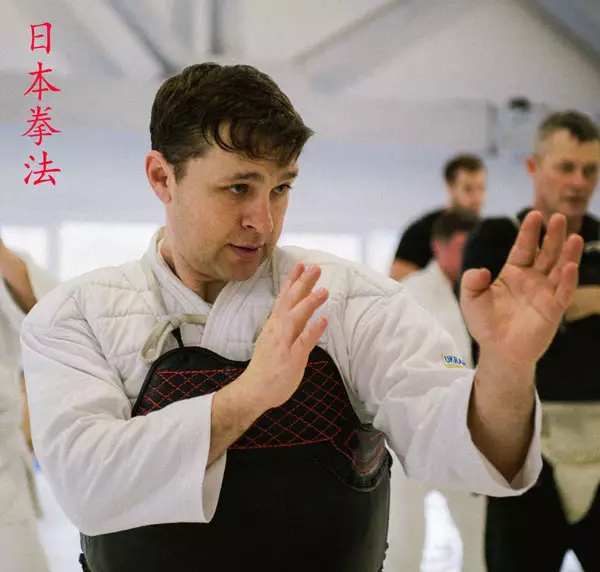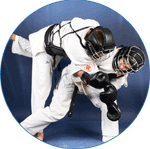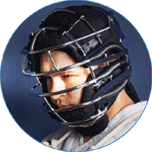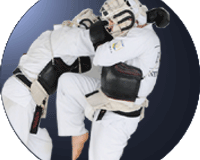Оригинал статьи "Стратегия и тактика рукопашного боя" на русском языке Вы можете прочитать здесь.
If you do not have your own strategy, you will be captured by somebody else’s tactics.
Gunbai-heiho (strategy and tactics) is a great art without which you can never win the fight. Etimology of “strategy”: in Greek «strategos» means the art of the commander-in-chief. In military lexicon strategy stands for planning and realization of the plan of actions with the use of all accessible means and terms. The strategy of self-defense is a plan of actions aimed at the victory in fighting and the means of achieving it are the skills of self-defense and the trained body of a fighter. Successful achieving of strategic aims is provided by carefully thought-out tactics. The tactics of fighting are thoroughly checked and at the same time dynamically changing depending on the situation actions of the fighter leading to flawless victory over the enemy or a group of enemies.
Types of strategies and tactics of hand-to-hand fighting
As the situation in the fight changes within seconds it requires intellectual toil. You must evaluate the surroundings at once, take decision and apply your skills to reach the goal at every stage of the fight. You should understand that fights can be different with different goals, so, strategy and tactics will be different. If the fighter understands what to do beforehand in different situations, he will know how to behave during the fight.
We can speak about the following strategies:
- The goal of the military strategy and tactics is a complete suppression of the aggression of the enemy, making him run or knocking him out of action and even killing;
- The goal of the police strategy and tactics is disarming and arresting of the enemy;
- Anti-terror strategy and tactics have the goal of liquidation of terrorists as fast as possible but under condition of hostage safety;
- Sports strategy and tactics’ goal is the victory over the opponent according to the stated rules.
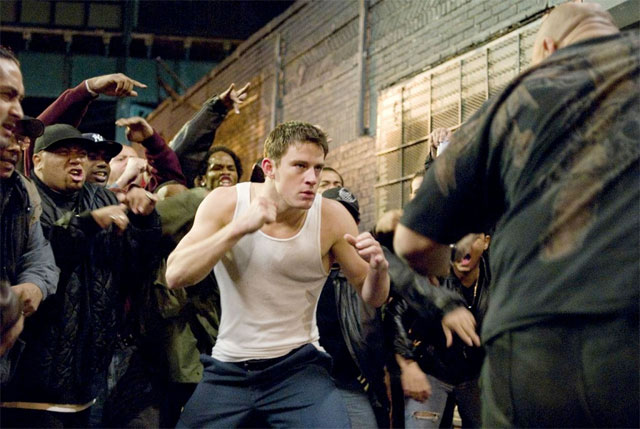
NB: in a street fight depending on the situation and fitness of the enemy it is possible to use any tactics mentioned above. In a sport fight with rules without the weapon we can use sports tactics. In Spain till recently sports fight with knives was practiced and after the fight a person who lost was taken to the graveyard. You should understand that in the street it is better not to use sport tactics. Fight with rules can also happen. It is better for you and your nearest and dearest. Choosing tactics you should decide if it is enough to calm down a drunk neighbor (police tactics) or you need to rescue neighbor women and children he (a drunk neighbor) threatens to kill with a knife (anti-terror tactics). You should act differently if local gangsters are in your way (military tactics).
Strategy: Stages of hand-to-hand fighting
Any hand-to-hand fighting consists of four stages:
Stage One: Assessment of the Opponent and the Situation
It is a very important and defining the future fight stage. At this stage you develop the plan of the fight and the correct tactics. You need:
- Assess the opponent, his intentions, fitness, aggression, danger, fighting skills, weapon and number;
- Assess the situation, items which can be used as weapon for attack or defense, possible ways of the attack and the retreatment. For example, if there are many opponents, you can use the fence or the wall of the building for the defense of your back. A stick, a stone, a pile of dry leaves in the street, a bottle, a plate in a restaurant, a pen or a bag in the office – all these items can be used as your weapon.

 . As Sun Tzu told, “All warfare is based on deception!”
. As Sun Tzu told, “All warfare is based on deception!”- You need to compare the arsenal of your fighting skills with the fitness of your enemy and the situation, define the most efficient skills for the fight;
- Assess other people around you in order to find out if they can help you or be your enemies, or stay neutral during the fight.
Evaluation criteria for enemy in hand-to-hand fight
Traditionally experts in theory of hand-to-hand fighting when choosing tactics consider fitness of the enemy to be the most important: anthropometric data, biomechanics of his movements, musculoskeletal state, cardio-vascular system, sensor reactions. Intellect and the psychological type of the opponent (melancholic, phlegmatic, choleric, sanguine person) are important too.
Then the arsenal of his technique skills should be found out.
But, if your fighting skills are various, you had better keep to another scheme – first, you evaluate the fighting skills of the opponent, compare them with yours and only after that you should consider his fitness.
NB: if you are armed with different wrestling, boxing (striking) and mixed techniques, you can use those you need successfully against a certain opponent. The main rule is to use for your defense the techniques of the opponent and for the attack to use the unknown for him fighting techniques. For example, against a boxer you need to use throws, snaps and undercuts while against a wrestler or a judoman you need to use striking techniques. The modern synthetic system of Nippon kempo hand-to-hand fight has great advantages comparing with traditional martial arts because even a beginner after the elementary preparation gets a wide arsenal of techniques from striking to using the weapon for self-defense. Thus, this fighter always has a card up his sleeve even if his opponent is an experienced fighter in a certain martial art.
Stage Two: Initial Fighting
You should pay attention to two aspects: a surprise effect and the initiative. Surprise effect. Attack first. Don’t wait till you are attacked. In “Cash me outside, how ’bout that?” situations don’t follow your opponent, don’t wait till you are in an embarrassing situation. The opponent waits that you will start the fight outside but you must attack immediately until you are inside or you just leave. Attack when you go first or you go second – there is no difference. Attack when the opponent does not expect. The world champion in boxing Vitaliy Klichko has always been considered an unhandy fighter because he could strike with his hand down and it is not standard for boxing. “All warfare is based on deception. At first be as an innocent girl and your opponent will open his door. Then be as a running hare and your opponent won’t manage to take measures for defense”. These are the words by the famous philosopher Sun Tzu.

 . Parliamentarians are also fighting.
. Parliamentarians are also fighting.Unexpected actions will allow you to catch the initiative in the fight. The initiative will give you the possibility to put the opponent in an embarrassing position for him and convenient for you.
Stage Three: the Climax of the Fight
The climax of the fight is the highest moment of stress and intensity. Japanese martial arts consider any fight as a very short period of time. An effective fight is possible only in the movie. However, from the point of self-defense you must disable your opponent as fast as possible, within 5-10 seconds of physical contact in order to avoid being hurt by him.
This is why if you do everything correctly, the climax will come at once just after the start of the fight and many people round you will not understand what happened.
A fight can last 2-3 minutes if it is a competition and you are in a special equipment which protects you from serious injuries or if you have several opponents. As usual, a physical contact lasts 20-30 seconds. During this time one opponent will be disabled.
That is why you should be ready to do your best and apply your fighting skills during first several seconds of fight – they are decisive.
Stage Four: the End of the Fight
The procedure of finishing the fight depends on the chosen tactics. If everything is clear with anti-terror, police or competition tactics, war or street fight tactics needs special consideration. You shouldn’t stay to finish off as in a movie and tell everything you think about him. Run as fast as possible. Unfortunately, the police consider the person beaten as a victim, although he attacked some people before the fight.
Tactics tasks in hand-to-hand fight
The whole strategy of the fight, the main plan of the fight is based on the performing of some tactical tasks which will lead to the ultimate goal, the victory. Generally, there is the following consequence of tasks:
- Creating a dominant position and forcing your style and conditions of the fight. If you need to fight in your enemy’s territory and use the style you don’t know, it won’t give you chances for your victory. And the other way round if you can apply skills you are good at and you drilled during trainings, you will succeed.
- Preparing of convenient situation for the attack. You need to put your opponent in the convenient for you position in which your attack will be perfect. It can be a fake to find out weak parts of the body and the way to distance you need for a particular technique. For example, if you are “invited” to have a talk, you can pretend drunk and as if it is difficult to stand for you, you can grasp.
- Conducting of the attack. Let’s say it again that you don’t have time for experiment, the attack must be perfect. You should experiment in sparring in trainings, but not during the real fight.
You should remember that the attack can’t be single, the first attack must be followed by the second, and the third etc. until the opponent is defeated. You should know that in many situations street conflicts are short; all successful attacks are sudden, but they are prepared and performed from a comfortable position. Imagine what position you can have with your physical condition. Train again and again!
Sen-ho Tactics Techniques
In the Japanese system of fighting and self-defense there is a notion of Sen-ho. This term does not have equivalents in the western philosophy but it can be defined as a revelation of the initiative in the domination of the opponent with the use of the intuition, when the fighter not only predicts the actions of the opponent but also controls them. Japanese consider Sen-ho main tactics of the fight in all traditional (karate-do, ju-do, ken-do, sumo, ju-jitsu, aiki-do) and synthetic (Nippon kempo) martial arts. Sen-ho principles in fact are tactics techniques which can be used during the whole fight. Five Sen principles:
- Sen (の先) means a constant attack. Here you use tactics of the constant attack in which you completely suppress the initiative and the defense of your opponent. A sudden attack is Sen too. Sen is learnt at the beginning of Nippon kempo.
- Sen no sen (先の先) means a simultaneous attack. It is the next level of skills. Sen no sen tactics is based on the attack which starts at that moment when the opponent just starts to attack you. This short period when the opponent has just moved, your task is to start your attack and be quicker than him taking into consideration his attacking actions simultaneously leaving the collision line and use the energy of his attack as your advantage and make it into the disadvantage for your opponent. Sen no sen is in fact a counterstrike.
- Sen sen no sen (対の先) is the recapturing of the initiative. Tactics technique of the next level of skills. In fact it is the development of sen no sen principle. Here the fighter doesn’t just wait for the attack of the opponent but feels him and attacks a tiny fraction of a second before his opponent. He actually recaptures the initiative of the fight blocking the opponent’s initiative. This level of mastery is achieved by constant practice, constant sparing when the position of arms, legs, head, and gestures of the opponent show you the moment of his attack and you are ahead. When a student reaches this level, his actions are already automatic.
A joke on the occasion: A boxer is in court. Judge: Please tell how everything happened. Boxer: Well, I come home and a mother-in-law opens the door and says Hello. I say Hello. And I see that she is open on the left.
- Go no sen (後の先) is the recapturing of the initiative which is followed by an immediate counter attack. In this tactics you wait for the attack of the opponent or even provoke it. After the start of the fight when the opponent can’t stop it you perform defensive actions with the following counter attack. In a simple variant at the initial stage of the preparation in Nippon kempo it looks like the opponent is given to conduct the attack performing the defense from it and then you immediately conduct your attack recapturing his initiative.
- Ki no sen. The highest level of Sen-ho. This principle has no physical dimension. In its name (ki-energy) there is a sense of energetic dominating the opponent. On the initial level of the preparation ki-no-sen is used for preventing the physical contact. The appearance, a face expression, a walking style, a posture, your gestures can make your opponent refuse to attack you. Using Ki no sen during the physical fight is taught in Nippon kempo to students with brown and black belts.
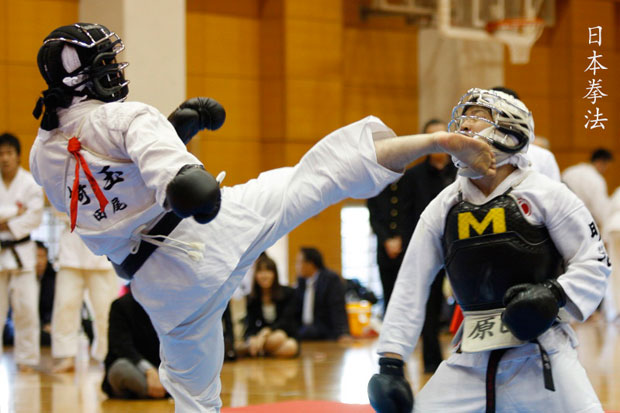
Practice is basis for success
We can acquire skills in applying the arsenal of fighting throwing and striking techniques, understand tactics rules of the fight, bring up and strengthen the spirit of the winner only in the real fight without limits. The modern synthetic hand-to-hand fight of Nippon kempo gives you the possibility to have sparring without limits avoiding injuring a partner . It is possible thanks to using of the complete Bogu defensive equipment which ultimately protects fighters. Only doing fighting techniques and strikes with all might you can use them with all might in the real fight. If you imitate strikes on the tatami or in the ring and you perform throws and chips holding the opponent and in a real violent fight you well hold carefully the elbow of your opponent to prevent him falling.
. It is possible thanks to using of the complete Bogu defensive equipment which ultimately protects fighters. Only doing fighting techniques and strikes with all might you can use them with all might in the real fight. If you imitate strikes on the tatami or in the ring and you perform throws and chips holding the opponent and in a real violent fight you well hold carefully the elbow of your opponent to prevent him falling.
To go in for any kind of self-defense or martial arts without sparring is the same as to learn to swim without water. If such a beginner appears in the water he will certainly drown. Fighters who know many strikes and techniques but do not practice will lose in the real fight with a street gangster who knows well two-three kicks and strikes and tactics of the street fight. In the Japanese system of hand-to-hand fighting Nippon kempo they say, “We get our knowledge in fight!”
In the process of sparring in Nippon kempo each student depending on his fitness and arsenal of techniques works out the individual style of the fight and the most important is a tactical way of thinking and fight intuition. Tactical thinking is an operational skill to evaluate the fighting situation immediately and take the decision to apply fighting actions. Fighting intuition is an ability to anticipate not only actions of the opponent but also the development of the situation in whole. Taking part in fights gives valuable fighting experience.
All together the arsenal of techniques, tactical thinking, fighting intuition and experience are the components of the real mastery of self-defense.
Master’s hands start earlier than thoughts . Mastery is not born from nothing. It is developed as the result of the routine discipline and hard work.
. Mastery is not born from nothing. It is developed as the result of the routine discipline and hard work.
При копировании материала просим ссылаться на источник https://nipponkempo.com.ua/article/strategy-and-tactics-of-hand-to-hand-fighting/. Правила публикации здесь. В противном случае, мы обязательно выявим плагиат и будем обращаться в DMCA Google.


